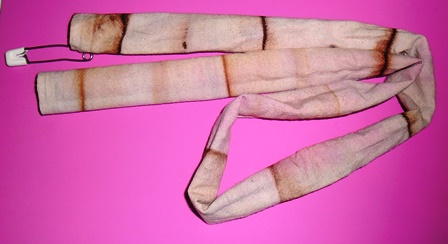At the Sydney craft show last month I picked up a yarn swift. If you are not familiar with the term a yarn swift is a nifty little device that holds a stretched out skein of yarn allowing you to wind it into a ball or yarn cake. They come in a plastic or wood version. Since I brought a lot of un balled skeins of yarn for me I decided to invest in a yarn swift when I saw a shop selling them at the show.

I set it up for the first time watching youtube how to do it. It clamps on the side of a table and spins around when you pull the yarn, if you have ever heard of an Aussie clothes line “the hills hoist” it is a bit like that. I placed my yarn on my swift, cut the knot tying the yarn ends together and threaded it onto my electronic ball winder. Now I am not too sure if there is a rule as to which way you need to yarn swift to spin (I had it going anti clockwise) but I will be honest my first attempt at balling the yarn didn’t run so smoothly as I hoped. My yarn kept getting caught and I had to help move the yarn swift around. I’m not sure if I didn’t have the arms of the yarn swift open wide enough (you can adjust it as to how wide it is) or if it was my ball winder giving issues as it hates too much tension on the yarn. Towards the end I noticed the cut end was starting to wrap around the base of the yarn swift too. It was only the last few rounds that the yarn swift spun independently.

The first time you do something is always awkward. My first attempt wasn’t a total disaster, my yarn never fell off the swift and I wasn’t left with a completed birds nest of a mess I just had to help turn the swift which is very easy. In the end I was able to wind up my first skein of this beautiful Wren & Ollie yarn.

A little later that same day I still had the swift set up so I decided to wind up the second skein of yarn I had. This time I adjusted the position of my ball winder a little, I tried it in several spots around the table. It has a small slot that you secure the yarn for tension so I was trying to find which was the best spot to place it in relation to where the yarn was coming off the swift. In the end I don’t think it made much difference. I decided to have the swift going clockwise this time and pushed open the arms wider, this I think did make a difference. I did still have to help it along but not nearly as much, it was more just a flick to get it spinning every minute or so which seems a lot but not as much as my first attempt. It also began spinning independently earlier than on my first attempt too and the yarn tail never got caught as I threaded it up through one of the arms. I stood there and became mesmerised watching the pretty blue yarn spin around!

I now have 2 gorgeous balls of yarn that I have started to use. I’m proud of myself that I pulled this swift out straight away and tried it out, I have a habit of getting a new craft gadget and because I don’t know how to use it properly it sits there gathering dust and eventually most times I end up giving it away. With more practice I will get better using the swift, I just have to remember to extend the arms of it as much as I can. The ball winder was also the issue I think too, it can be temperamental when different tension is placed on the yarn or it there is just the slightest snag. When I first brought my winder (on sale) I wasn’t sure how much I would use it but once I finally pulled it out of the box I have started to use it a bit some maybe I might need to invest in a better one.
Cassiy



























